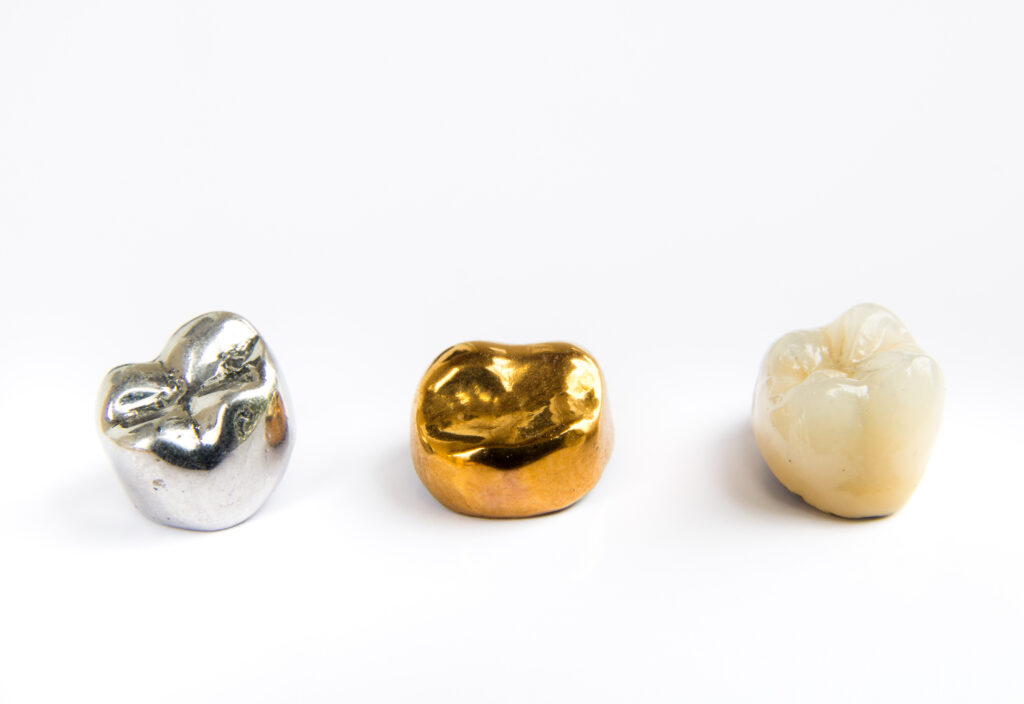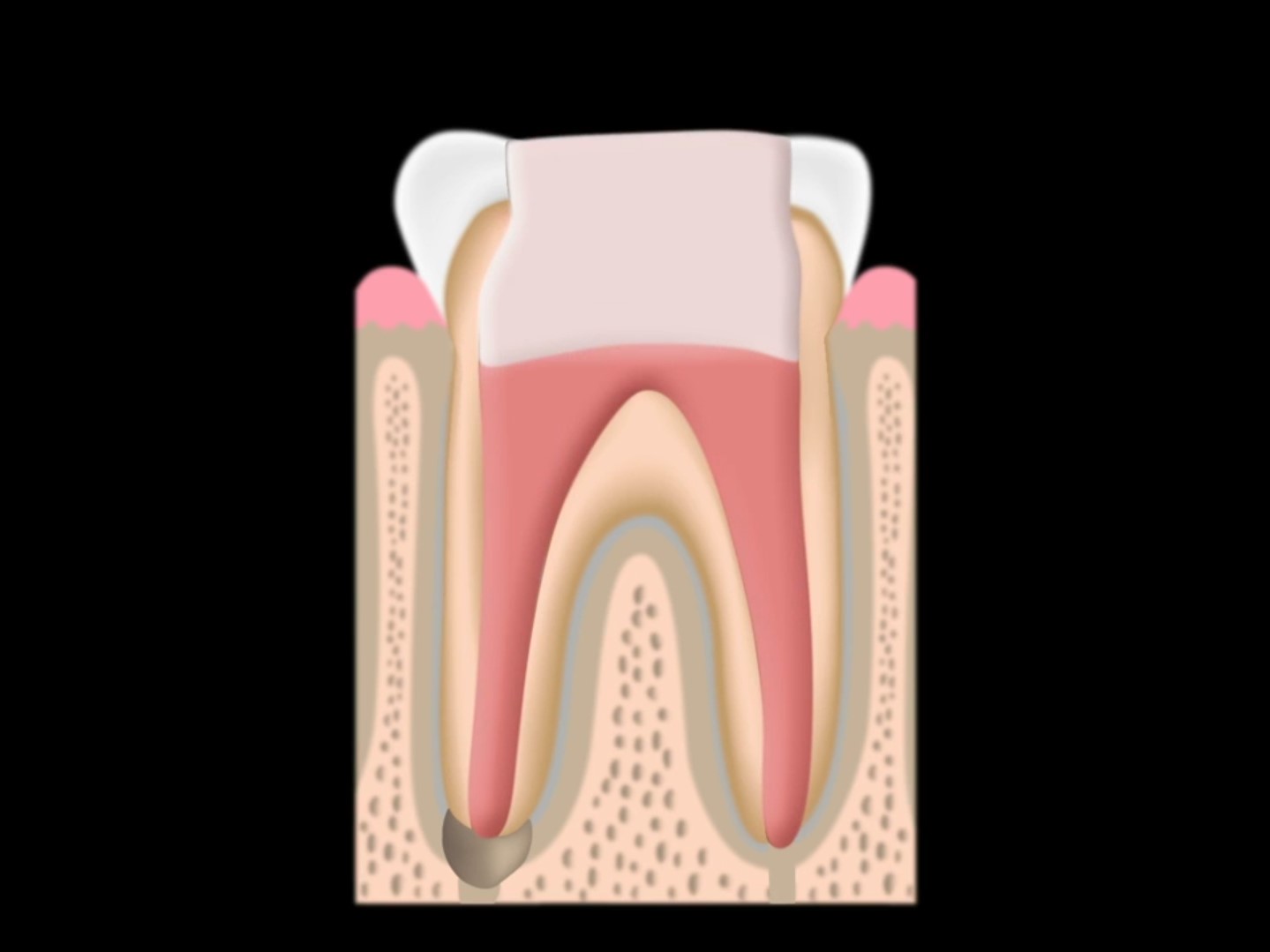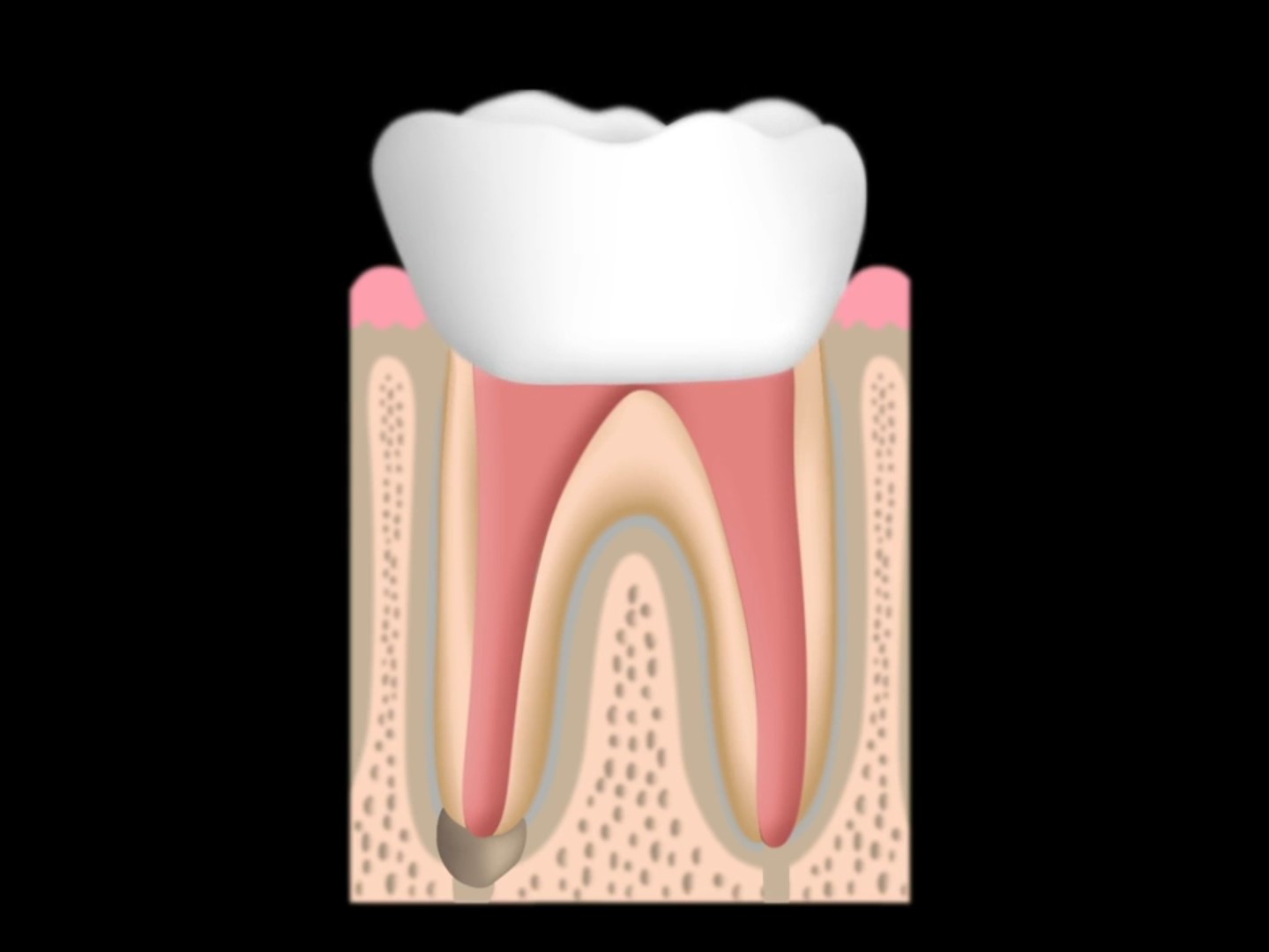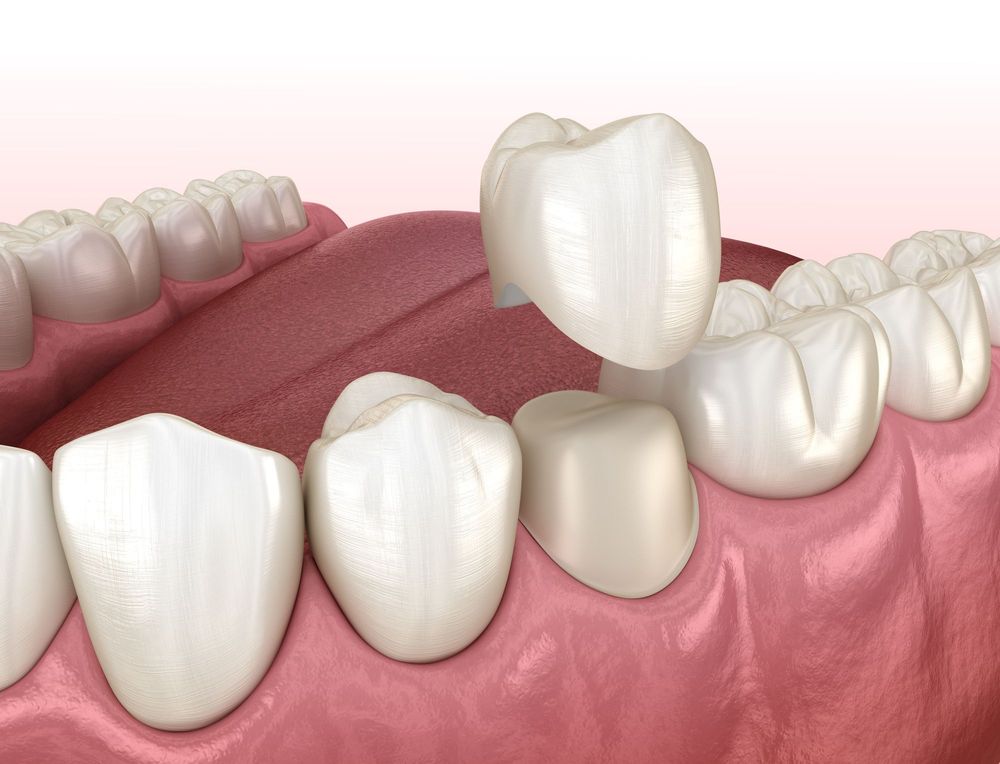What is a Dental Crown?
A tooth can lose its structure due to fracture or decay; however, a Dental Crown can restore the fractured or decayed tooth to its standard form and function. Further, a Dental Crown goes entirely over the damaged tooth to cover and protect from further damage. Finally, a Dental Crown can dramatically improve a tooth’s shape, contour, contacts, orientation, and alignment.
Types Of Dental Crowns

There are 5 types of Dental Crowns
- Zirconia Crown
- Porcelain – Metal Crown
- Gold Crown
- Composite Crown
- Titanium Crown
1. Zirconia Crown
Pros
- More natural-looking
- Recommended in people with severe bruxism.
- Fracture resistant
Cons
- Technique sensitive
2. Porcelain – Metal Crown
Pros
- Metal gives strength
- Porcelain is more natural-looking
Cons
- Needs more tooth removal to have enough thickness for metal and porcelain layer
- Metal margin is more visible around the gingiva
- Porcelain can fracture in rare cases off of the metal coping and may need replacement.
3. Gold Crown
Pros
- Less tooth removal is needed
- Less esthetic
Cons
- Irritate teeth
- Galvanic Shock
- Conduct heat and cold.
4. Composite Crowns / Temporary Crowns
Seldom used, mostly done for temporary reasons.
Dental Crowns Procedure
Sometimes a fracture or decay to the tooth is so large that it will weaken the tooth and a filling will not be an adequate treatment. A crown is necessary to prevent further deterioration of the tooth. A Dental Crown will make the tooth whole again.
1. Severe Decay
2. Fractured tooth
3. Cracked tooth syndrome
4. Root canal treated tooth
5. Replacing extensive restorations to produce proper contour and contacts between teeth
6. Close the gap between teeth
The Crown needs the same care as natural teeth.
1. Brushing
2. Flossing
3. Check-up
4. Dental Hygiene Care
Steps In Dental Crown Fabrication
Time needed: 1 hour
How is Dental Crown made?
- Tooth Build up
In severe dental conditions, tooth structure may be missing for more than half the size of the tooth. In this case, the dentist adds additional bulk to the fractured or decayed tooth structure with a filling (called Core Build-Up).

- Tooth Preparation
After the Post and Core Build-Up procedure, the dentist removes the outer layer of the tooth to create space for the Crown.

- Temporary Crown
Further, he takes an impression of the prepared tooth. Finally, he fabricates a Temporary Crown and cements it to the tooth.
- Permanent Crown
A dental laboratory will fabricate a Crown. At the final appointment, the dentist removes the temporary Crown and cements a permanent Crown.

